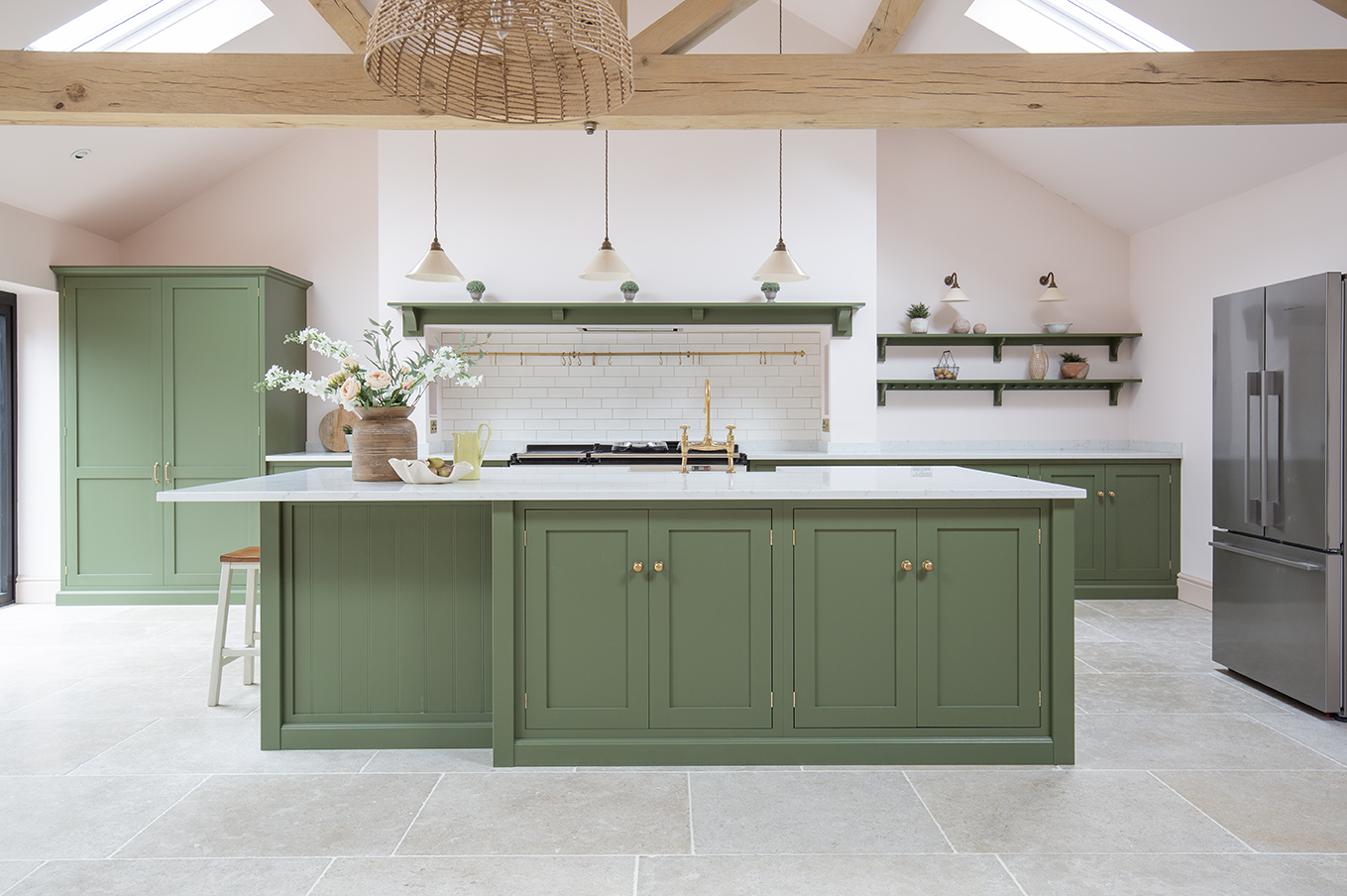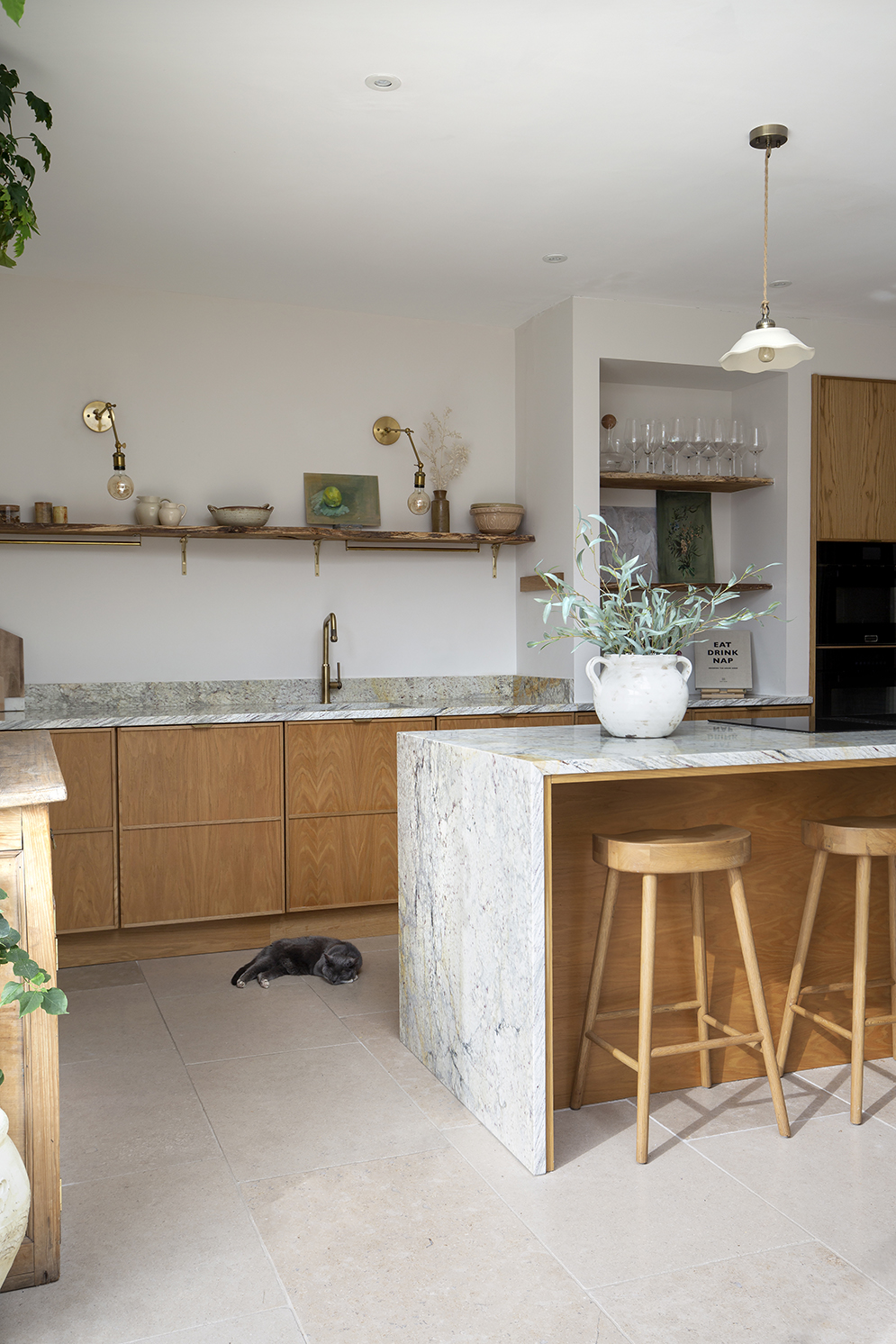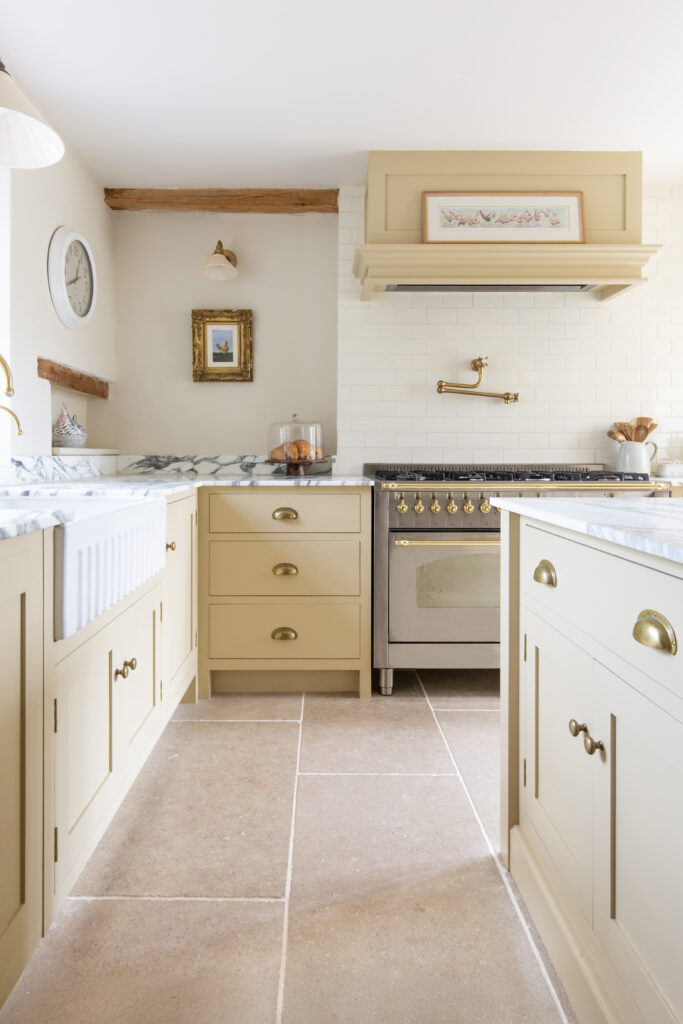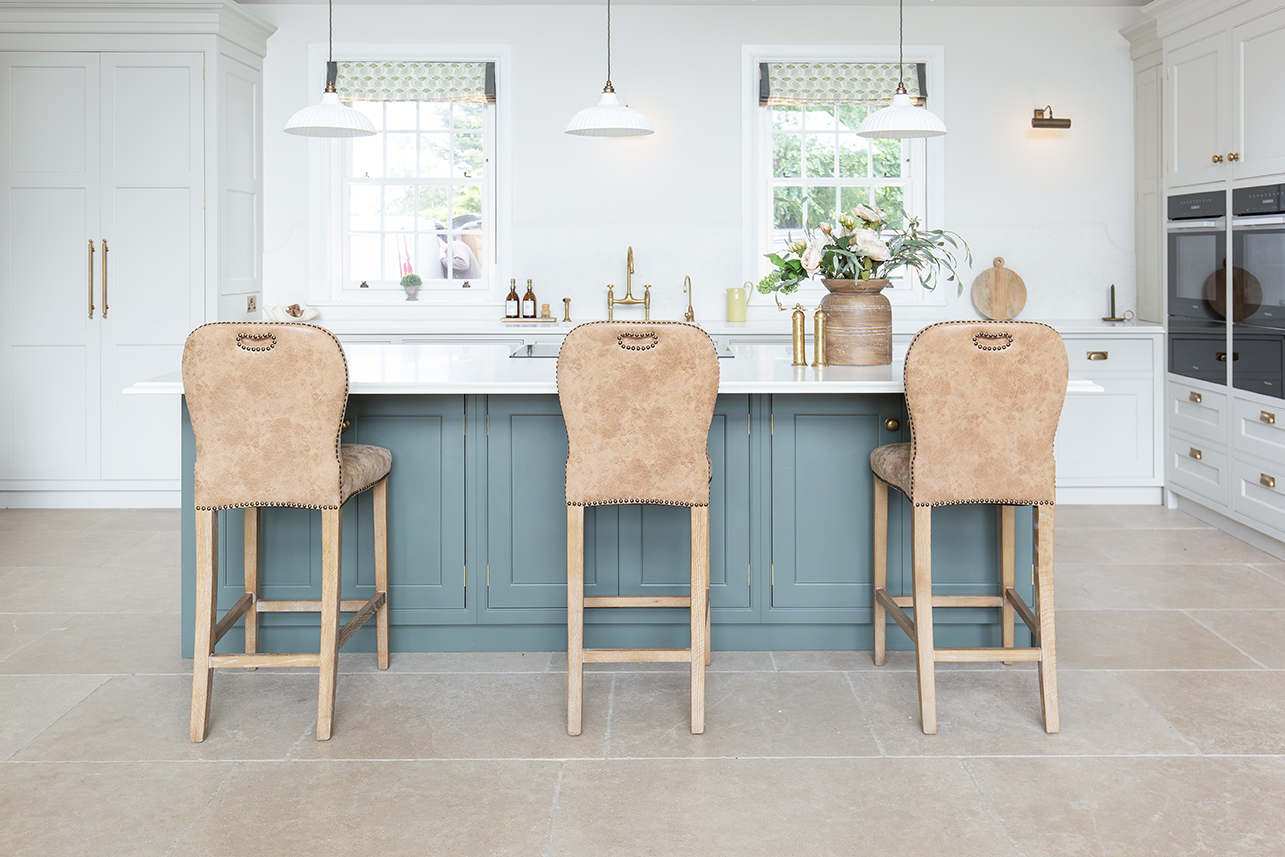The kitchen is often the heart of the home and always sees a lot of use, and therefore an important question customers often ask is ‘what are the best Dijon limestone tiles for kitchens and busy family homes?’. As direct importers for over 25 years, we have developed an expertise in sourcing the best quality natural stone tiles, and the Dijon limestone is one of our most popular options. In this post, we will cover what makes it so attractive as kitchen flooring, along with which types of Dijon limestone will work the best for you as kitchen tiles.

What makes Dijon limestone perfect for kitchens?
Being a very dense natural limestone, Dijon benefits from a particularly hardwearing finish compared to softer natural stones. This means both the surface finish and the strength of the tiles themselves are very high, ensuring that cracks, chips or scratches from dropped pots or pans are highly unlikely to occur with your Dijon limestone flooring. This density also means they work well with underfloor heating, a popular consideration in modern day kitchens. You will notice that they do a great job of maintaining and holding in their heat after the under floor system has been turned off, and equally will stay comfortably cool in warmer summer months.
What size and format should I choose?
Much like other areas of the home, the size and shape of your kitchen can dictate what sort of sizes will work when it comes to choosing the perfect Dijon limestone flooring. Commonly, kitchens are larger spaces in a home, and so a larger rectangular tile in the popular ‘free length’ format is one go-to choice. The 600 or 500mm wide tiles feature a mixed variety of lengths ranging between 700 – 1000mm. This makes for a beautiful, traditional ‘random’ laying pattern, giving your kitchen a country look and feel. For smaller kitchens, this format is also available in a 400mm wide option, and there is also a fixed size 600x400mm choice for those preferring a more uniform or contemporary laying pattern.

Another popular choice is the ‘Opus’ pattern. This includes four separate sizes of square and rectangular Dijon limestone tiles, to create a classic Opus pattern of varying sizes. This is available in small, large and grand Opus patterns to suit many different sizes and shapes of kitchens.

What finish is best for kitchens?
When it comes to kitchens, the finish of Dijon limestone you choose can be tailored to what style of cabinetry and décor you have selected. The beauty of the Dijon range is that there are plenty of differing finishes to fit to your chosen style. If you are working with a traditional, country kitchen with rustic shaker style units, then the tumbled finish may be the perfect option for you. This is a gentle ageing process, softening edges and stone markings. Dijon tiles with a tumbled finish yield a more subtle, pastel-like appearance, and a complimenting grout colour will showcase the aged edges and add to the traditional look. For a similar look, but with a more rustic finish, the Dijon seasoned features the same tumbled edges, with added surface texture bringing more tactility and warmth to the tiles.

For those with a contemporary kitchen, the brushed finish is the perfect choice. This version of the Dijon limestone offers a clean, modern look with straight cut edges and a slight sheen to the surface. This also brings out an extra depth and richness to the colour and natural details within the stone.

How do I clean Dijon limestone in a kitchen?
With any busy kitchen, especially in a family home, there can be many food and drink spillages that can stain a natural stone floor if not cared for correctly. Sealant will provide a good barrier to staining for your Dijon kitchen tiles, as well as making them easier to clean, but we always recommend spot cleaning stains as and when they occur. For strongly acidic spillages, such as red wine, it is always a good idea to dilute the area with water first before cleaning up, so as to prevent the concentrated spillage from breaking through the sealant.
For the cleaning process itself, there are many methods and products on the market, but for Dijon limestone the best way is to use a pH neutral cleaner suitable for natural stone – such as Lithofin Wash & Clean – diluted in a bucket of water with a mop. It is always best to keep wet mopping to an occasional clean where possible, using a hoover with a soft brush attachment for day to day maintenance, whilst for more stubborn soap or shower product stains, a stronger cleaner such as Lithofin Power Clean can be used.


Other FAQs
Are Dijon limestone tiles easy to look after and clean?
Dijon limestone tiles are naturally very dense and hardwearing, making them a practical option for kitchens that see plenty of footfall. There are a few key steps needed to look after your stone floor and keep it looking its best for years to come – read our guide on how to clean and look after natural stone.
In short, Dijon limestone needs sealing upon installation which acts as a protective barrier against stains and requires resealing approximately every 4-5 years. Vacuuming with a brush attachment is recommended and spot cleaning any spillages promptly. Any harsh, acidic cleaners need to be avoided with natural stone – look for pH neutral cleaners and cleaners that say, ‘suitable for natural stone’. If you do have any stubborn stains on the tiles, there are products available to help remove these.
Is Dijon limestone suitable for underfloor heating?
Yes! Underfloor heating is perfectly suited with our natural stone and Dijon limestone tiles following the correct installation. We strongly advise the use of anti-fracture matting, which is industry standard. This is a thin membrane that should be installed between the screed and your tiles. This membrane protects the tiles from lateral sheer movements, allowing the screed to fracture without damaging the tiles.
–
We hope you have found this post helpful and informative in choosing the best Dijon limestone tiles for your kitchen, as well as how to clean and maintain Dijon limestone in your home.

